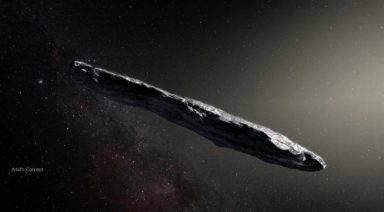Technocracy vs Democracy; Are Politicians Really in Control?

Uncertainty and discontent in government has led to some unforeseen populist movements lately, often promising to disrupt the status quo or playing to people’s fears and proclivity toward divisive rhetoric. In either case the root of these movements’ popularity is a lack of faith in the political process, mostly in democratic societies. But some believe that this may be a planned tactic, or the natural segue into a technocracy in which the decision makers become those who have excelled outside of politics. Could the future of democracy be a mixed political system incorporating industry giants and politicians, or are we on the brink of a new world order in which a small group of outsiders begin to take control?
Technocracy vs. Democracy
The technocratic definition is somewhat ambiguous, but essentially it is an outsider with no prior political experience, who is technically skilled and usually part of an elite group of society. Technocrats are often leaders in their industry and apply the scientific method to problem solving in order to achieve their goals.
We incorporate technocracy, to a certain extent, in our government with independent and bipartisan panels and committees. These groups are tasked with solving problems and implementing solutions that have been voted on or put together by a branch of government. The current administration in the U.S., for a short period, put together a commission of leading executives in top industries, known as the Manufacturing Jobs Initiative, as part of an ostensible effort to glean insights and develop strategies for economic issues.
However, a true technocracy is almost antithetical to a democratic form of government. Behaving more like a corporation with a board of directors who act as the decision makers, the technocratic definition of government wouldn’t necessarily take into account the will of the populace or consider dissenting popular opinion. While it is assumed that this ruling elite would have the people’s best interests in mind, decisions would essentially be autocratic and the rulers would be elected and replaced by a small vote amongst themselves.
An example of this that is relevant to a hypothetical technocracy in U.S. government, is the Chinese Communist Party. While there are several branches within the Chinese government, the primary decision-making body consists of seven people who come from a slightly larger Politburo of 25 people. While this form of government is incredibly effective at decision making and implementing policy, it is oppressive and intolerant of public dissent. It is also not immune to corruption and poorly managed protocols.

Another example that is often cited as a wildly successful instance of technocracy is Singapore. The country is clean, wealthy, technologically advanced, and provides a high standard of living to the majority of its citizens, but when it comes to social issues there are rarely concessions made or public opinion consulted in its legislative process.
Technocracy Rising
This growing trend of technocratic control started during the Great Depression in the 1930s at Columbia University. Replacing politicians with scientists and engineers was proposed as a solution to fix the dire economic dilemmas of the time, and was likely the inspiration for Aldous Huxley’s dystopian novel, Brave New World. Historically, technocracy has become an attractive concept when politicians have stumbled or there is little faith in the political system, hence it’s Depression-era acclaim. But could this portend a technocratic resurgence today?
While we still maintain the remnants of a democratic form of government in the U.S., there is a rising tide of technocratic influence and control in our society and this can be seen on either end of the political spectrum. The lobbying influence of the Koch brothers has become well documented, while just recently Mark Zuckerberg invested $1 billion of his own to create an LLC with the goal of shaping public policy. Much like the Koch brothers, Zuckerberg’s LLC can influence politics and policy without having to disclose its spending and investments, like most non-profit political interest groups would.
With the increasing polarization of the electorate and a complete lack of legislation being passed in government, we will likely start to look to the private sector more and more, for solutions to our problems, especially as our lives become increasingly intertwined with technology. Decisions will be made by those who offer the best solutions and can influence the government, while limiting the amount of imposed regulation. When this dynamic proves to be more effective than government can be, which doesn’t seem difficult in this day and age, we will slowly start to defer to these industries to solve our problems.
The issue with allowing for technocratic solutions to political problems is that a technocracy is not a political system, but rather an economic one. A business leader, like Elon Musk, might be able to solve a problem that plagues society with a clever and concise solution, but actually implementing that solution to a large population with diverse and varied needs, takes the expertise of a politician who can navigate the convoluted systems of regulation, legislation, and bureaucratic hurdles in order to be effective.
A Trilateral Technocratic Conspiracy
What frightens many is the prospect of a new world order, in which there is a global government imposed by a select few. According to Patrick Wood, one of the means of implementing a world order is through a technocratic system. He says that one of the goals of a technocracy is to control the economic means of society and take away ownership of private property, so that the ruling party can effectively control the populace, much like certain oppressive communist regimes of the past.
Wood warily eyes the Trilateral Commission as the group that has been attempting to surreptitiously supplant our democratic process with a technocratic one world order. Started by David Rockefeller in the 1980s, the Trilateral Commission is an NGO that works in conjunction with the Council on Foreign Relations, with the supposed goal of uniting policy between North America, Europe, and Japan. The group doesn’t allow access to politicians and claims to be a think tank that focuses on democratic government, human rights, and freedom of speech, though many believe it to have an antidemocratic worldview, with a membership base that primarily represents large multinational corporations.

The group’s eerie undemocratic view was laid out in its 1975 report, The Crisis of Democracy: On the Governability of Democracies, in which it states that political problems in the U.S. stem from an excess of democracy and proffers the solution of restoring power in centralized government institutions.
Wood says that we are in the nascent phase of a technocratic takeover that could lead to this new world order. He says he believes we are at about 80 percent technocratic control, but are distracted by a smokescreen of issues that are hyped in the media.
With companies like Google and Tesla developing self-driving vehicles and its leaders heralding the coming day when all transportation will be automated, one might start to question what these advancements will really lead to. Musk’s vision of a fully automated transportation industry sees a large percent of the workforce as unemployable when that day comes. His proposed solution of a universal basic income, in which a no-strings-attached stipend is given to citizens to satisfy their basic needs, sounds frightening to some, especially when trust in government is at an all-time low. And when the government controls the population’s basic needs, there can be fear of an authoritarian takeover.
When one looks at the creeping grip that technology has on us, it becomes immediately apparent that our personal information and identities are being sold on a daily basis by large corporations. This increasingly intrusive collection of data occurs mostly unbeknownst to us and can be used to profit and create individual profiles for an array of reasons. At the same time, the growth of companies like Amazon are creating furtive monopolies on the roots of our economy. Not only does the company have a hand in the transactions of just about anything we could want to purchase, but it is also selling recording devices to consumers, guised as a convenient tool.
Maybe it’s overly paranoid to think that Alexa is recording and transmitting your banal, dinner table conversations, but based off of Edward Snowden’s revelations, it’s not that farfetched to think that the government may have backdoor access into the technology or that it can can remotely access your robotic personal assistant. And these reaches are only likely to continue, as invasive technology is masked with ostensible convenience, allowing for a potentially unseen technocratic control of society, where politicians are merely puppets or, “useful idiots,” as Wood refers to them. Many would even argue that this has already happened.
Neuroscience in Advertising; When Does it Become Mind Control?

By now you’re probably used to how predictive advertising has become, but it probably felt intrusive at first. Advertisers have always used subtle tactics to convince you to buy things, but now the privacy boundary is increasingly blurred. While it’s somewhat known that advertising finds its roots in propaganda, are developments in technology and neuroscience changing the fundamental nature of marketing into something that borders on mind control or manipulation?
The foundational elements of public relations and advertising were developed by a man named Edward L. Bernays, who happened to be the nephew of none other than Sigmund Freud. Freud gave a copy of his General Introductory Lectures, his seminal work on psychoanalysis, to Bernays as a gift in the nascent phase of his career.
Bernays was intrigued by Freud’s research, notably the idea that irrational forces drive human behavior. He took the idea and parlayed it into what he referred to as “engineering consent,” a concept that instead of bowing to consumer demands, cultivated them.




































